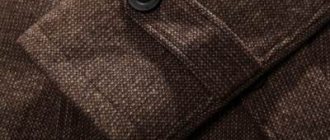Few people can call the proximity to a scolopendra pleasant. When this creature appears in the house, many simply panic. Against its background, even cockroaches look much prettier. And even though these long-bodied centipedes mostly live in damp forests, sometimes they still climb into residential buildings and stay there for a long time. And here it is necessary to clearly know how to deal with scolopendra, since not every method used to destroy domestic insects familiar to us can be suitable.
Description
Scolopendra is a centipede that belongs to the class of arthropods. In most cases, these predators (since they feed on other insects) are poisonous and pose a danger to people. Meeting a centipede in the house is not the most pleasant event, and you should get rid of it as soon as possible.
Where do scolopendras come from in the house? Millipedes love moisture and are therefore often found in basements, bathrooms and kitchens. They come to the apartment not only for comfortable living conditions, but also in search of food.
What to do if a centipede is spotted in the house? What to do if she bites? What measures should be taken, and what means of combating scolopendra are more effective: folk or professional? The answers to all these questions can be found in the article.
Which is the best water heated towel rail to choose: manufacturer ratings
Types of water heated towel rails: which one is better to choose, manufacturer ratings and review of models. Advantages and disadvantages of towel dryers. Features and installation rules.
Ratings
- 14.08.2019
- 2322
What is the difference between a scolopendra and a flycatcher?
There is an opinion that the centipede is the same as the flycatcher. It is worth noting that in appearance they have some similarities, but these are different insects.
The main differences between the centipede and the flycatcher are as follows:
- Appearance. The flycatcher grows up to 60 millimeters, while the centipede can reach 20 centimeters or more in length. The antennae of the flycatcher are long and thin, consisting of 500 segments, while those of the centipede can vary in size and color depending on the species. The scolopendra's body is denser, covered with a shell, which allows it to move freely on rocky surfaces.
- Lifestyle. The flycatcher remains active not only at night, but also during the day. Scolopendra hunts only in the dark.
- Bite. The flycatcher very rarely bites humans. It is difficult for her to bite through the skin; it can only damage the top layer. The flycatcher itself will not attack people, but if you hold it in your hands for a long time, it will, of course, attack. Despite the fact that the flycatcher has poison, it is unable to harm humans. © https://ydoo.info/qa/skolopendra-v-dome.htmlThe sting of a scolopendra is not only very painful, but also dangerous, as it can cause an allergic reaction, which is accompanied by fever and general weakness.
Flycatchers are not dangerous to people or pets. They hunt flies and mosquitoes. But the appearance of insects is unpleasant, so they prefer to destroy them.
For some, the appearance of scolopendra in the house is a good sign: wait for good news. Moreover, the larger the centipede, the better the news. Therefore, according to popular belief, it is undesirable to kill the scolopendra; it should be carefully swept over the threshold with a broom. It should be noted that this is extremely difficult to do, since the insect develops great speed, which makes it almost impossible to catch it.
Don't make mistakes!
Quite a lot of people, when they discover scolopendra, try to get rid of it in ways that in practice do not bring any results, and sometimes can even be harmful. These include:
- Attempts to “kill” the centipede with improvised means - neither a newspaper nor a slipper are capable of killing the centipede. This is due to the fact that its body is covered with a very dense shell, which reliably protects adult individuals from such attacks. In addition, she is quite nimble and moves quickly, so it will most likely not be possible to make a targeted strike.
- Using aerosols against crawling insects. Since this centipede is not an insect, it is simply useless to use the above remedies against it. Moreover, it is much larger in size than insects, and therefore the concentration of toxic substances must be quite high, which such drugs cannot provide. In addition, centipedes run very quickly, and therefore long-term spraying is almost impossible.
- Using sticky traps. Here again the impressive size of the centipedes will interfere. Plus, even if an individual gets stuck and loses several legs in trying to get out, it will escape without much difficulty, and the limbs will soon grow back.
- Attempts to catch it with your hands, a jar, a bag, etc. This is absolutely impossible to do, since if there is danger, the numerous walking limbs of this creature become poisonous.
Types of scolopendra
Now there are about 90 species of scolopendra. All of them feed on invertebrate insects, and large individuals can even attack lizards, mice and toads.
Small
The little centipede, or, as it is often called, the house flycatcher, is that same flycatcher. The following varieties are distinguished:
- arachnid (black) scolopendra.
- ordinary.
They differ mainly in color: the former are darker, and the latter are often brown or light yellow.
Crimean
Crimean, or ringed, scolopendra grows up to 15 centimeters in length. Her legs are short but strong. The body is flat, covered with a chitinous shell, which allows it to easily penetrate into homes. The Crimean centipede is aggressive and can attack humans.
This insect primarily lives in the Crimea (which is where it got its name). It loves damp and dark places, so it is most often found under stones, in wood and in foliage. The basement is also the centipede's favorite habitat. If you don’t get rid of the scolopendra there, it will move into your house or apartment.
The Crimean centipede, when irritated, releases poison not from the bite, but from the entire body. If such a centipede crawls across a person’s skin, discomfort and burning will occur.
Ringed
Lives in Southern Europe. The maximum size is 15 centimeters in length. Body color varies from brown to orange, with females always being darker. The body structure of the ringed scolopendra is similar to the Crimean one. It can also very often be found in houses or apartments.
Gigantic
The giant scolopendra is one of the most striking representatives of its genus. Lives in the southern and western parts of America. The giant centipede is capable of attacking lizards, toads, mice and even birds.
Are centipedes harmful to humans?
In fact, apart from its terrifying appearance, the centipede is absolutely safe for apartment residents and for pets and other pets. As a rule, the flycatcher comes out to hunt at night, so many owners do not even suspect the existence of this insect in their home. If you do not try to pick it up (even in this case the flycatcher will not bite a person), then this may not end very pleasantly, since there is poison on the insect’s legs. This can lead to redness of the skin. To get rid of discomfort, just place your hand under a stream of cold water. Pets do not suffer in any way from such a neighborhood. And a person, if he does not do anything unnecessary or unreasonable, cannot suffer either.
What to do if you are bitten?
The centipede rarely attacks itself, but if this happens, you need to know what to do if it bites.
- First, you need to thoroughly wash the bite site with soap (preferably household soap), and then treat it with alcohol.
- Apply a sterile bandage.
- Rest more and drink fluids so that the poison leaves the body faster.
- Contact your doctor.
Under no circumstances should you drink alcohol. It speeds up the metabolism, which causes the poison to spread faster throughout the body, which leads to a worsening of the condition.
Symptoms
The main symptoms after a scolopendra bite are as follows:
- swelling and redness at the site of the bite;
- pain (can be compared to a hornet sting);
- increased temperature (sometimes up to 39 degrees);
- itching;
- general intoxication of the body.
Important! Symptoms may persist for 1-2 days, so it is important to monitor the condition and consult a doctor if necessary.
In most cases, scolopendra venom is not fatal. This is only possible if a person is allergic to some component of the poison or has cardiovascular diseases. However, symptoms can usually be relieved if you go to the hospital in a timely manner.
It is worth noting that domestic scolopendras (flycatchers) do not cause such symptoms. If they sting, only slight redness and a burning sensation may appear at the site of the lesion.
Female centipedes are more poisonous than males. Moreover, they are more active and aggressive, so they attack more often.
How to protect yourself from scolopendra?
Most often, scolopendras attack people in nature, climbing into tents and getting into clothes. Therefore, it is very important to know how to protect yourself from scolopendra in the fresh air.
- Close your tent carefully and check for insects before climbing into it.
- Carefully inspect clothing and shoes.
- Do not go outdoors in the dark.
- Carefully lift branches and stones.
If a scolopendra bites a child or a pregnant woman, you should definitely consult a doctor!
What should you not do after being bitten?
There are some things you should not do after being bitten by a scolopendra. The most important thing is that you should not cut the bite site in the hope of getting rid of the poison. Also, do not apply a tourniquet, as this will lead to stagnation of blood and even greater problems. Do not try to catch up and kill the scolopendra.
Setting up a terrarium
In order for your new pet to live happily ever after, no special conditions are required - a modest terrarium is quite enough. Spiders are gloomy ascetics and spend most of the time allotted for themselves sitting in one place, only occasionally making “jogs” to stretch their legs. A cozy spider house with optimal dimensions is a terrarium equal to two lengths of the full span of its legs, that is, even the largest spider will feel great in a living space of 40x40cm.
But do not forget that spiders can move quite well on vertical surfaces, so the main thing is a reliable lid that will close well and keep the poisonous pet in its rightful square centimeters.
Let's move on to creating optimal conditions for the spider.
- Substrate. It is necessary to “cover the floor” in the spider’s home with a special flooring. The ideal option is vermiculite, a special mineral rock that is used in crop production. Layer - from 3 to 5 cm. If you can’t find one, you can also use coconut substrate or regular peat. By the way, it is recommended to mix the latter with sphagnum moss. As a last resort, when there is absolutely nothing, garden soil will do (only from a flower shop and in no case from the nearest flower bed!) or soil used for growing indoor plants. However, it is advisable to use this option for a short time and try to quickly replace it with a substrate more suitable for the spider.
- Temperature. Spiders are thermophilic and prefer to stay in a temperature range that will be close to +22…28°C. These pets are immune to a slight short-term decrease in temperature, but it is undesirable to abuse such situations. But at the same time, it is not recommended to overheat the terrarium. This situation is especially dangerous for well-fed animals, in which the process of rotting undigested food may begin in the stomach.
- Lighting. For spiders, which are nocturnal inhabitants, the natural light in the room is sufficient. No additional sources are needed. Moreover, direct light from a lamp can quickly destroy this fragile creature.
- Humidity. A drinking bowl and the right substrate help to some extent to ensure its optimal level. If the readings on the hygrometer are too low, then from time to time you will have to irrigate the terrarium with water from a spray bottle. But again, high humidity is dangerous, so when buying a spider, immediately find out from the seller what humidity is needed specifically for this species.
- Filling. For a spider in a terrarium, the main thing is a shelter in which it can hide during daylight hours, and if you keep a burrowing species, then a “house” is simply a must for it. Without it, such a pet will be in constant stress. Setting up such a shelter is very simple - you can lean a piece of bark, a coconut shell against the wall, put an inverted half of a flower pot in the corner, etc. Everything else, such as decorative driftwood, artificial plants and other similar elements, is unnecessary. Spiders are completely indifferent to them, so you purchase and install such accessories exclusively for yourself.
Why do they appear in the house?
There are two reasons why scolopendras may appear in the house:
- optimal living conditions (when it is warm and dry outside, and the houses are humid and damp);
- availability of food.
Centipedes often appear in those houses and apartments where there are basements, because it is always dark and high humidity. From there, in search of food, insects can climb into houses through cracks, and into apartments through pipes.
If a scolopendra is noticed in the house, then you should carefully inspect the home, since, most likely, the centipede came here in search of food. She usually hunts cockroaches, spiders and bedbugs.
Preventive measures
Nobody has canceled preventive measures in the fight against “uninvited guests”. Be a guardian of your own home and follow some safety rules.
What are they:
- if these arthropods are found in your home, you should not walk around the house without slippers;
- before going to bed, check your pajamas and bed linen for the presence of centipedes, as these creatures are active at night;
- since centipedes do not settle in houses in large colonies, by throwing only 1-2 representatives into the street or placing them in an airtight container, you can already sleep peacefully;
- involve a pet, for example a cat, in eliminating the “tenants”, as it can cope with this task perfectly;
- thoroughly ventilate and dry the damp room, and then the predatory arthropod will bypass your house ten times;
- do not allow water to accumulate in the sink and bathtub;
- Before building a new house, carefully consider the ventilation system so that condensation does not accumulate in the rooms.
Now you know many of the subtleties and secrets of a successful operation to destroy arthropods. We sincerely hope that this information was useful to you. Having received the necessary knowledge in theory, you can easily proceed to the practical part.
How to get rid of it?
Of course, if you notice one centipede in the house, you shouldn’t panic, but if there are more than 2-3 of them, then it’s better to get rid of them as soon as possible.
How to deal with centipedes in the house? You won’t be able to get rid of centipede with a slipper by simply slamming it down, since the body of this insect is flat and covered with a dense shell. The main methods of combating centipedes are divided into folk and professional. Moreover, it is necessary to poison not only the centipede, but also the food for which it came, that is, Prussians, bedbugs, ants and other insects.
Folk remedies
Folk remedies are not always effective, but they are safer, especially if there are four-legged pets in the house. However, it is worth noting that the chemicals now produced are of quite high quality and can also be used at home without harm to people and animals.
Boric acid
Treating floors and baseboards with boric acid is the simplest and most effective way to combat scolopendra. In this case, there is no need to mix the substance with anything; it is enough to simply apply it in those places where the centipede is most likely to live.
Adhesive tapes
Double-sided tape can be used as adhesive tape. It should be pasted in those places where scolopendra lives, and several flies should be placed on the sticky surface as bait. The centipede will come for food and stick itself.
This method of fighting insects is quite humane, but if the individual is too large, the adhesive tape will not hold it, and the centipede will simply run away.
Fighting against scolopendra using folk remedies is not always effective, since it does not see well and often does not notice baits and traps made for it. Therefore, it is better to use special chemicals.
Professional chemistry
It is with the help of professional chemistry that you can achieve quick results in the fight against scolopendra. There are several chemical options that can be used against centipedes.
Aerosols
In most cases, aerosols work well against scolopendras. Ideally, it is necessary to spray the centipede itself with the product, but sometimes it is enough to treat the places where it was noticed. Crawling along the treated surface, it catches particles of chemicals with its paws, which gradually poison it.
Ordinary dichlorvos fights scolopendra quite well. However, this product is toxic, so they need to treat the rooms wearing protective masks, and some time after the procedure, ventilate the rooms well.
Liquid insecticides
Typically, liquid insecticides are sold in large bottles where the concentration of chemicals is very high, so these products must be diluted before use. It is very important to read the instructions, as the manufacturer may have recommendations for use.
Liquid insecticides should be applied to surfaces where scolopendra has been spotted. As a rule, these are baseboards, corners, crevices and nooks in the apartment.
Disinsection service
Unfortunately, only a disinfestation service can cope with a large infestation of scolopendras, whose employees, when starting treatment, take into account the following factors:
- affected area;
- the number of centipedes, as well as other dangerous insects that may be in the house;
- processing tools that may have been used before.
The last point is extremely important. If earlier attempts were made to combat scolopendras, which did not produce results, this may indicate that the insects have developed immunity to chemicals, and exterminators now need to select stronger drugs.
The pest control service can use the following methods to combat centipedes:
- Cold fog. It involves irrigating a room using a special machine. Small (up to 50 microns) particles of chemicals create a cloud that settles for several hours, making the millipede more likely to be exposed to the insecticide and become infected.
- Hot fog. This is a dry method of irrigating a room using a special machine that heats chemicals and then sprays them under high pressure. The insecticide particles in this case are even smaller than with cold fog - about 0.5 microns.
By treating the room with the second method, you can get rid of not only insects, but also bacteria.
Folk methods of struggle
Scolopendras are solitary pests; they rarely live in large colonies. Having found a centipede, you can suck it up with a vacuum cleaner or sweep it into a jar, close the lid and take it outside, away from the house. It is difficult to crush a large arthropod; for this you will need a shovel or other heavy object.
You should not rely on pets: cats and dogs are usually afraid of large centipedes and try to avoid them.
Expert opinion
Mityuk Stefania Bogdanovna
Boric acid, red pepper, chamomile powder and other methods do not work on scolopendra.
To detect and destroy scolopendra, you can place sticky traps near baseboards, cracks under furniture, thresholds and window sills. Any insect catching tape will do. Dead flies or spiders are suitable as bait. Sticky centipedes can be thrown away along with the tape; for safety, it is better to wear thick rubber gloves.
A reliable, but not very safe way is to scald the centipede with boiling water. This method is suitable for bathrooms or garages. The immobilized arthropod is removed using a scoop, protecting your hands with gloves.
How would you fight centipedes?
ChemicalFolk
Camouflage and camouflage
She knows how to hide and camouflage herself, which is why the Crimean scolopendra is dangerous. A photo of the insect demonstrates its low visibility in the common natural tones of the subtropics. Being non-aggressive by nature, she is easily frightened, despite her threatening appearance. The reaction is the release of a special toxic substance, sticky and burning. This mucus causes itching, burning and allergies, especially in people prone to painful reactions to toxins. You should be wary of touching, not to mention closer contact. It is difficult to avoid meeting this unpleasant centipede precisely because of its good camouflage and the habit of this insect to seek refuge wherever it can hide from bright light.
Lifestyle and hunting
The giant scolopendra is a heat-loving representative of the genus of centipedes. It lives in countries with warm or tropical climates. The squad belongs to the nocturnal inhabitants of their places of life cycle; in daylight and in open space, they do not feel comfortable enough. All scolopendras move quite quickly, but the giant one is particularly fast. Scolopendras live mainly underground or in dark and damp shelters, old lying trees, etc. Since their bodies do not have reliable protection and lose moisture very quickly, animals prefer a nocturnal lifestyle and damp, secluded shelters.
Hunting
The scolopendra predator is a very skilled hunter, usually hunting at night, catching its prey in a vulnerable state and doing its job very quickly and cruelly. The predator's diet includes larvae, beetles, earthworms, etc. The giant one prefers a larger catch; its diet includes spiders, beetles, lizards, some types of snakes, birds and even bats. This species, thanks to its speed, is able to hunt in harsh conditions and take prey by surprise.
When attacking a victim, it clasps it with its paws and injects a dose of paralytic poison into its body, holding it until it loses its ability to resist. Then the process of food absorption begins. When the largest species of these creatures (Skolopendra gigantea) attacks larger prey (lizard, snake, bat), the predator, after injecting poison and paralyzing its victim, begins its meal by eating the brain, since it contains the most nutritious and useful substances.
Sometimes you come across equal opponents, in a fight with which it is the opponent who often gains the upper hand. These are several types of beetles, a praying mantis, etc. - the first have too strong a shell, while others are simply stronger than it in a fight.
Relationships between individuals
The predator prefers a solitary lifestyle. Contact between two males occurs quite peacefully. This species has the habit of devouring its own kind, especially in captivity, most often these are young individuals. In natural conditions, such cases occur extremely rarely!
What does scolopendra look like?
- The animal's structure consists of two parts: a long body and a head. It is divided into separate segments, their number depends on the length of the individual and the type of creature, on average from 20 to 25 cm. Each of them has a pair of yellowish legs, on which there is a pointed spine. Their length is 3.4 centimeters. All of them have a poisonous gland; when they come into contact with human skin, they leave inflammation similar to small burns.
- The body of the predator is assembled from plates, which are connected by flexible membranes and covered with an exoskeleton. Skolopendra gigantea is a soft-bodied animal. This species tends to shed its natural clothing, a process called molting. After which the entire chitinous shell remains in this place, and the predator itself takes on a watery appearance and the process of restoring new protection begins.
- The head of the animal has the form of a plate with eyes, a pair of jaws and two antennae. In the process of evolution, in the first segment of the body, the legs took on the function of poisonous claws, thanks to which the centipede injects its poison into the body of a potential victim, after which paralysis occurs.
- The last pair of legs is also different from the others - they are much longer than the others because they are directed backwards. They help the animal move through shelters and burrows, and also play a big role in hunting, serving as a kind of anchor.
- The giant centipede has a brown or red color with a copper tint. Although their color may have other types, even in individuals of the same sample. They can be green and purple, yellow and red, and even have a bluish tint. It all depends on the age of the animal, and on the period of formation of the chitinous shell after molting, etc.
Prevention of insects
Silverfish are sensitive to environmental factors. To prevent them from starting up in the bathroom or toilet, you need to take care to reduce the humidity in these rooms. Do not dry wet laundry here. It is recommended to install additional heating and ventilation systems.
After each bath in the shower or bath, you need to remove condensation from the walls . You should regularly dry damp corners with a fan heater. It is recommended to treat the room with a solution containing chlorine. Bathrooms and toilets need to be ventilated frequently.











